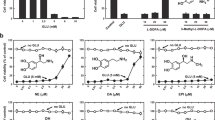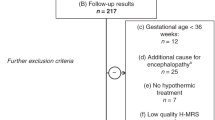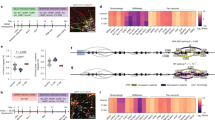Abstract
Glutaryl-CoA dehydrogenase deficiency is an autosomal recessively inherited neurometabolic disorder with a distinct neuropathology characterized by acute encephalopathic crises during a vulnerable period of brain development. 3-Hydroxyglutarate (3-OH-GA), which accumulates in affected patients, has been identified as an endogenous neurotoxin mediating excitotoxicity via N-methyl-d-aspartate receptors. As increased generation of reactive oxygen species (ROS) and nitric oxide (NO) plays an important role in excitotoxic neuronal damage, we investigated whether ROS and NO contribute to 3-OH-GA neurotoxicity. 3-OH-GA increased mitochondrial ROS generation in primary neuronal cultures from chick embryo telencephalons, which could be prevented by MK-801, confirming the central role of N-methyl-d-aspartate receptor stimulation in 3-OH-GA toxicity. ROS increase was reduced by α-tocopherol and—less effectively—by melatonin. α-Tocopherol revealed a wider time frame for neuroprotection than melatonin. Creatine also reduced neuronal damage and ROS formation but only if it was administered ≥6 h before 3-OH-GA. NO production revealed only a slight increase after 3-OH-GA incubation. NO synthase inhibitor Nω-nitro-l-arginine prevented NO increase but did not protect neurons against 3-OH-GA. The NO donor S-nitroso-N-acetylpenicillamine revealed no effect on 3-OH-GA toxicity at low concentrations (0.5–5 μM), whereas it potentiated neuronal damage at high concentrations (50–500 μM), suggesting that weak endogenous NO production elicited by 3-OH-GA did not affect neuronal viability. We conclude from our results that ROS generation contributes to 3-OH-GA neurotoxicity in vitro and that radical scavenging and stabilization of brain energy metabolism by creatine are hopeful new strategies in glutaryl-CoA dehydrogenase deficiency.
Similar content being viewed by others
Log in or create a free account to read this content
Gain free access to this article, as well as selected content from this journal and more on nature.com
or
Abbreviations
- 3-OH-GA:
-
3-hydroxyglutarate
- DHR:
-
dihydrorhodamine-123
- GCDH:
-
glutaryl-CoA dehydrogenase (EC 1.3.99.7)
- GDD:
-
glutaryl-CoA dehydrogenase deficiency
- HBS:
-
magnesium- and zinc-free HEPES buffered saline
- l-NAME:
-
Nω-nitro-l-arginine
- MK-801:
-
(5R,10S)-(+)-5-methyl-10,11-dihydro-5H-dibenzo[a d]cyclohepten-5 10-imine
- NMDA:
-
N-methyl-d-aspartate
- NO:
-
nitric oxide
- nNOS:
-
neuronal nitric oxide synthase; synonym nitric oxide synthase type I (EC 1.14.13.39)
- NO−:
-
nitroxyl anion
- NO+:
-
nitrosonium ion
- ROS:
-
reactive oxygen species
- SNAP:
-
S-nitroso-n-acetylpenicillamine
References
Hoffmann GF, Athanassopoulos S, Burlina AB, Duran M, deKlerck JBC, Lehnert W, Leonard JV, Monavari AA, Müller E, Muntau AC, Naughten ER, Plecko-Starting B, Superti-Furga A, Zschocke J, Christensen E 1996 Clinical course, early diagnosis, treatment, and prevention of disease in glutaryl-CoA dehydrogenase deficiency. Neuropediatrics 27: 115–123
Goodman SI, Norenberg MD, Shikes RH, Breslich DJ, Moe PG 1977 Glutaric aciduria: biochemical and morphological considerations. J Pediatr 90: 746–750
Land JM, Goulder P, Johnson A, Hockaday J 1992 Glutaric aciduria type I: an atypical presentation together with some observations upon treatment and the possible cause of cerebral damage. Neuropediatrics 23: 322–326
Stokke O, Goodman SI, Moe PG 1976 Inhibition of brain glutamate decarboxylase by glutarate, glutaconate, and beta-hydroxyglutarate: explanation of the symptoms in glutaric aciduria?. Clin Chim Acta 66: 411–415
Heyes MP 1987 Hypothesis: a role for quinolinic acid in the neuropathology of glutaric aciduria type I. Can J Neurol Sci 14: 441–443
Ullrich K, Flott-Rahmel B, Schluff P, Musshoff U, Das A, Lücke T, Steinfeld R, Christensen E, Jakobs C, Ludolph A, Neu A, Röper R 1999 Glutaric aciduria type I: pathomechanism of neurodegeneration. J Inherit Metab Dis 22: 392–403
Kölker S, Ahlemeyer B, Krieglstein J, Hoffmann GF 2000 Maturation-dependent neurotoxicity of 3-hydroxyglutaric and glutaric acids in vitro: a new pathophysiologic approach to glutaryl-CoA dehydrogenase deficiency. Pediatr Res 47: 495–503
Herkert M, Röttger S, Becker CM 1998 The NMDA receptor subunit NR2B of neonatal rat brain: complex formation and enrichment in axonal growth cones. Eur J Neurosci 10: 1553–1562
Komuro H, Rakic P 1993 Modulation of neuronal migration by NMDA receptors. Science 260: 95–97
Ikonomidou C, Bosch F, Miksa M, Bittigau P, Vöckler J, Dikranian K, Tenkova TI, Stefovska V, Turski L, Olney JW 1999 Blockade of NMDA receptors and apoptotic neurodegeneration in the developing brain. Science 283: 70–74
Dugan LL, Sensi SL, Canzoniero LM, Handran SD, Rothman SM, Lin TS, Goldberg MP, Choi DW 1995 Mitochondrial production of reactive oxygen species in cortical neurons following exposure to N-methyl-d-aspartate. J Neurosci 15: 6377–6388
Mattson MP, Barger SW, Begley JG, Mark RJ 1995 Calcium, free radicals, and excitotoxic neuronal death in primary cell culture. Methods Cell Biol 46: 187–216
Patel M, Day BJ, Crapo JD, Fridovich I, McNamara JO 1996 Requirement for superoxide in excitotoxic cell death. Neuron 16: 345–355
Lafon-Cazal M, Pietri S, Culcasi M, Bockaert J 1993 NMDA-dependent superoxide production and neurotoxicity. Nature 364: 535–537
Schinder AF, Olson EC, Spitzer NC, Montal M 1996 Mitochondrial dysfunction is a primary event in glutamate neurotoxicity. J Neurosci 16: 6125–6133
Dawson TM, Gonzalez-Zulueta M, Kusel J, Dawson VL 1998 Nitric oxide: diverse actions in the central and peripheral nervous system. Neuroscientist 4: 96–112
Beckman JS, Koppenol WH 1996 Nitric oxide, superoxide, and peroxynitrite: the good, the bad, and the ugly. Am J Physiol C1427–C1437
Lipton SA, Choi YB, Pan ZH, Lei SZ, Chen HSV, Sucher NJ, Loscalzo J, Singel DJ, Stamler JS 1993 A redox-based mechanism for the neuroprotective and neurodestructive effect of nitrite oxide and related nitroso-compounds. Nature 364: 626–632
Kim WK, Choi YB, Rayudu PV, Das P, Asaad W, Arnelle DR, Stamler JS, Lipton SA 1999 Attenuation of NMDA receptor activity and neurotoxicity by nitroxyl anion, NO−. Neuron 24: 461–469
Pettmann B, Louis JC, Sensenbrenner MCL 1979 Morphological and biochemical maturation of neurones cultured in the absence of glial cells. Nature 281: 378–380
Boscoboinik DO, Chatelain E, Bartoli GM, Stauble B, Azzi A 1994 Inhibition of protein kinase C activity and vascular smooth muscle cell growth by d-α-tocopherol. Biochim Biophys Acta 1224: 418–426
Ahlemeyer B, Krieglstein J 1998 Retinoic acid reduces staurosporine-induced apoptotic damage in chick embryonic neurons by suppressing reactive oxygen species production. Neurosci Lett 246: 93–96
Gow AJ, Branco F, Christofidou-Solomidou M, Black-Schultz L, Albelda SM, Muzykantov VR 1999 Immunotargeting of glucose oxidase: intracellular production of H2O2 and endothelial oxidative stress. Am J Physiol L271–L281
Royal JA, Ischiropoulos H 1993 Evaluation of 2,7-dichlorofluorescin and dihydrorhodamine-123 as fluorescent probes for intracellular H2O2 in cultured endothelial cells. Arch Biochem Biophys 302: 348–355
Henderson LM, Chappell JB 1993 Dihydrorhodamine-123: a fluorescent probe for superoxide generation?. Eur J Biochem 217: 973–980
Green LC, Wagner DA, Glogowski J, Skipper PL, Wishnok JS, Tannenbaum SR 1982 Analysis of nitrate, nitrite and 15N-nitrate in biological fluids. Anal Biochem 126: 131–138
Giusti P, Gusella M, Liparetti M, Milani D, Zhu W, Vicini S, Manev H 1995 Melatonin protects primary cultures from cerebellar granule neurons from kainate but not from NMDA excitotoxicity. Exp Neurol 131: 39–46
Fridovich I 1997 Superoxide anion radical (O2−.), superoxide dismutases, and related matters. J Biol Chem 272: 18515–18517
Olanow CW 1993 A radical hypothesis for neurodegeneration. Trends Neurosci 16: 439–444
Tan DX, Chen LD, Poeggeler B, Manchester LC, Reiter RJ 1993 Melatonin: a potent, endogenous hydroxyl radical scavenger. Endocr J 1: 57–60
Rothe G, Emmendorffer A, Oser A, Roesler J, Valet G 1991 Flow cytometric measurement of the respiratory burst activity of phagocytes using dihydrorhodamine-123. J Immunol Methods 138: 133–135
Bueb JL, Gallois A, Schneider JC, Parini JP, Tschirhart E 1995 A double-labelling fluorescent assay for concomitant measurements of [Ca2+]i and O2− production in human macrophages. Biochim Biophys Acta 1244: 79–84
Ostrovidov S, Franck P, Capiaumont J, Dousset B, Belleville F 1998 Effects of H2O2 on the growth, secretion, and metabolism of hybridoma cells in culture. Vitro Cell Dev Biol Anim 34: 259–264
Gilad E, Cuzzocrea S, Zingarelli B, Salzman AL, Szabo C 1997 Melatonin is a scavenger of peroxynitrite. Life Sci PL169–PL174
Sun AY, Chen YM 1998 Oxidative stress and neurodegenerative disorders. J Biomed Sci 5: 401–414.
Liebler DC 1993 Peroxyl radical trapping reactions of α-tocopherol in biomimetic systems. In: Packer L, Fuchs J (eds) Vitamin E in health and disease. Marcel Dekker, New York, 85–95.
Halliwell B, Gutteridge JM 1985 Oxygen radicals and the nervous tissue. Trends Neurosci 6: 22–26
Holtzman D, Togliatti A, Khait I, Jensen F 1998 Creatine increases survival and suppresses seizures in the hypoxic immature rat. Pediatr Res 44: 410–414
Dechent P, Pouwels PJ, Wilken B, Hanefeld F, Frahm J 1999 Increase of total creatine in human brain after oral supplementation of creatine-monohydrate. Am J Physiol R698–R704
Malcon C, Kaddurah-Daouk R, Beal MF 2000 Neuroprotective effects of creatine administration against NMDA and malonate toxicity. Brain Res 860: 195–198
Matthews RT, Yang L, Jenkins BG, Ferrante RJ, Rosen BR, Kaddurah-Daouk R, Beal MF 1998 Neuroprotective effects of creatine and cyclocreatine in animal models of Huntington's disease. J Neurosci 18: 156–163
Wilken B, Ramirez JM, Probst I, Richter DW, Hanefeld F 1998 Creatine protects the central respiratory system under anoxic conditions. Pediatr Res 43: 8–14
Happe HK, Murrin LC 1995 In situ hybridization analysis of CHOT1, a creatine transporter, in the rat central nervous system. J Comp Neurol 35: 94–103
Das AM, Lücke T, Ullrich K 2000 Glutaric aciduria I: creatine supplementation restores creatine phosphate in mixed cortex cells incubated with 3-hydroxy-glutarate. J Inherit Metab Dis 23( suppl 1): 100.
O'Gorman E, Beutner G, Wallimann T, Brdiczka D 1996 Differential effects of creatine depletion on the regulation of enzyme activities and on creatine-stimulated mitochondrial respiration in skeletal muscle, heart, and brain. Biochim Biophys Acta 1276: 161–170
Cagnoli CM, Atabay C, Kharlamova E, Manev H 1995 Melatonin protects neurons from singlet oxygen-induced apoptosis. J Pineal Res 18: 222–226
O'Gorman E, Beutner G, Dolder M, Koretsky AP, Brdiczka D, Walliman T 1997 The role of creatine kinase inhibition of mitochondrial permeability transition. FEBS Lett 414: 253–257
Kim WK, Rayudu PV, Mullins ME, Stamler JS, Lipton SA 1996 Down regulation of NMDA receptor activity in cortical neurons by peroxynitrite. In: Moncada S, Stamler JS, Gross S, Higgs EA (eds) The biology of nitric oxide. Portland Press, London, 26
Kölker S, Ramaekers V, Zschocke J, Hoffmann GF 2001 Acute encephalopathy despite early therapy in a patient with homozygosity for E365K in the glutaryl-CoA dehydrogenase gene. J Pediatr 138: 277–279
Author information
Authors and Affiliations
Corresponding author
Additional information
Supported by Deutsche Forschungsgemeinschaft (grant KO 2010/1-1 to S.K.).
Rights and permissions
About this article
Cite this article
Kölker, S., Ahlemeyer, B., Krieglstein, J. et al. Contribution of Reactive Oxygen Species to 3-Hydroxyglutarate Neurotoxicity in Primary Neuronal Cultures from Chick Embryo Telencephalons. Pediatr Res 50, 76–82 (2001). https://doi.org/10.1203/00006450-200107000-00015
Received:
Accepted:
Issue date:
DOI: https://doi.org/10.1203/00006450-200107000-00015
This article is cited by
-
The biochemical subtype is a predictor for cognitive function in glutaric aciduria type 1: a national prospective follow-up study
Scientific Reports (2021)
-
Toxic Synergism Between Quinolinic Acid and Glutaric Acid in Neuronal Cells Is Mediated by Oxidative Stress: Insights to a New Toxic Model
Molecular Neurobiology (2018)
-
Oxidative Stress, Disrupted Energy Metabolism, and Altered Signaling Pathways in Glutaryl-CoA Dehydrogenase Knockout Mice: Potential Implications of Quinolinic Acid Toxicity in the Neuropathology of Glutaric Acidemia Type I
Molecular Neurobiology (2016)
-
Founder effect confirmation of c.241A>G mutation in the L2HGDH gene and characterization of oxidative stress parameters in six Tunisian families with L-2-hydroxyglutaric aciduria
Journal of Human Genetics (2014)
-
IDH2 somatic mutations in chronic myeloid leukemia patients in blast crisis
Leukemia (2011)



